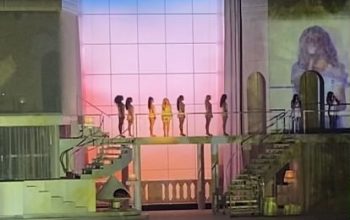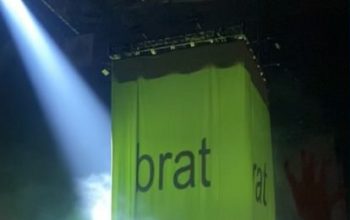How “Poltergeist” exhumes ghosts in suburbia.
Zach Zanatta, Contributor
The ghosts of Poltergeist aren’t invaders. They aren’t summoned through Ouija boards or reciting the Necronomicon. They aren’t curses, or vengeful murderers with unfinished business here on earth. With one shot, director Tobe Hooper and writer/producer Steven Spielberg subvert the entire ghost mythos. Real estate agent Steve Freeling and his boss Mr. Teague overlook recently purchased land for phase five of their suburban development project. Acres of headstones dwarf the two men as they observe the next step of their reinvigoration of the valley. When Steve objects to the morality of developing on a cemetery, Teague laughs him off: “It’s not an ancient burial ground, it’s just people.” Poltergeist begins not at a graveyard, or a dark forest, but on a lazy Sunday in the suburban community of Cuesta Verde, California. This idyllic view of suburbia was perpetuated by Hollywood throughout the 80s, touted as the beating heart of the American dream. Spielberg is largely responsible for Hollywood’s rose-tinted suburbia with family films such as ET, also released in 1982. Poltergeist is rooted in this familiar cinema. The loving family dynamic, the whooping adventure score, the moments of triumph of good over evil. But the film stretches these tropes to their limit, and the fabric of the form begins to tear. It’s between these tears that ghosts appear. Hooper and Spielberg don’t go looking for ghosts, they rip open the American cinema they helped create and find them inside, where they’ve always been. barriers of cinematic space and allows ghosts to spill into the popular cinematic sphere. Horror isn’t relegated to gothic castles or dilapidated cabins; it lives in the place we call home. The family home and the horrific are not differentiated by form, they simultaneously occupy the same space, overlapping without obfuscating one other. Hooper approaches Poltergeist with a homogenous cinematic lens, omitting tonal shifts and intentionally muting its horror influences in lieu of popular family adventure films. Ghosts reveal themselves in the cracked veneer of the 80s family film, allowing the horrific to seep into the genre opposed to dredging up the horror form. The camera doesn’t need to search if the ghosts are already here. Poltergeist shatters During the climax of the film, Mr. Teague watches in horror as the Freeling home is destroyed by supernatural forces. Steve grabs the shocked man by the shoulders and screams at him, “you moved the cemetery, but you left the bodies, didn’t you? You left the bodies, and you only moved the headstones!” Hollywood built an America; Founded on hope and idealism, the movies promised a fresh start for everyone. While this America claimed to be built from the ground up, Poltergeist questions what you may find in that ground. The insatiable hunger to progress forward builds on the back of the dead and leaves them to become soil for the developing world. But as Mr. Teague says himself, it’s not ground, it’s people, and as picture perfect as your subdivision may be, they’re bound to get restless.
Photo Credit: Emily Tung




